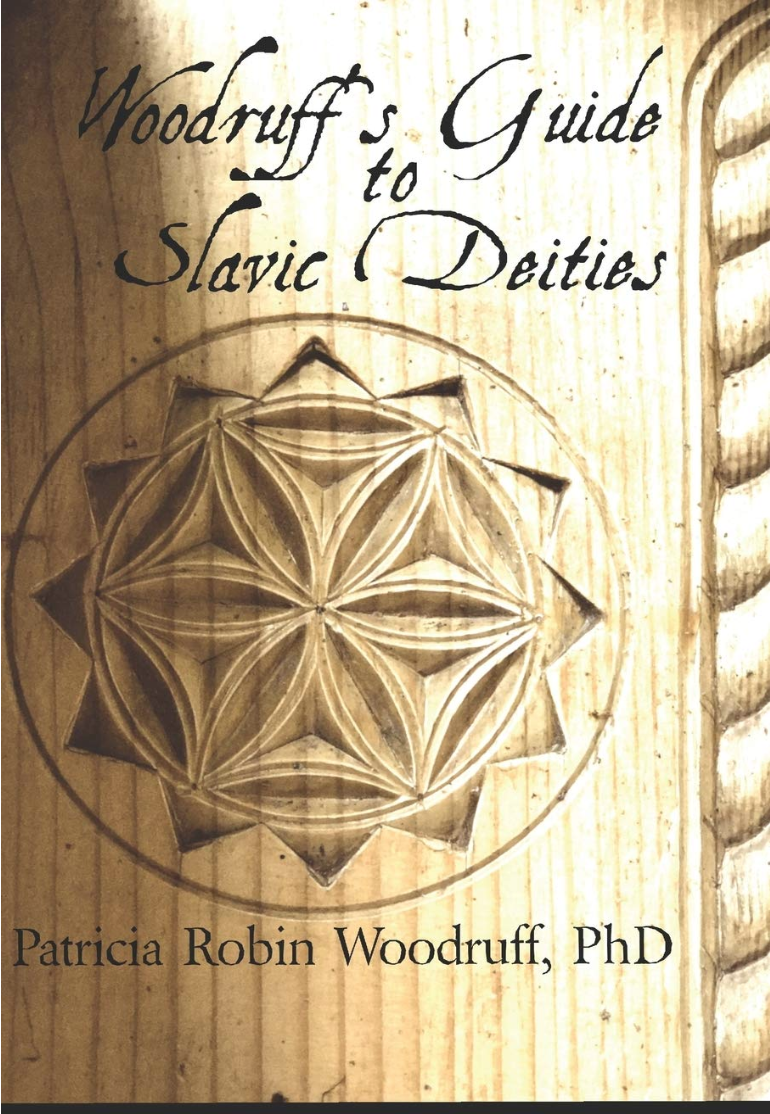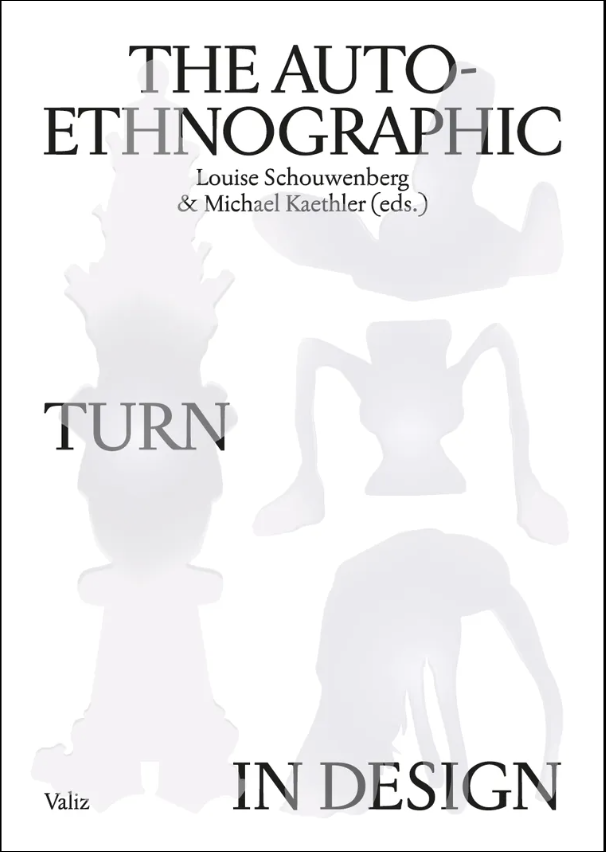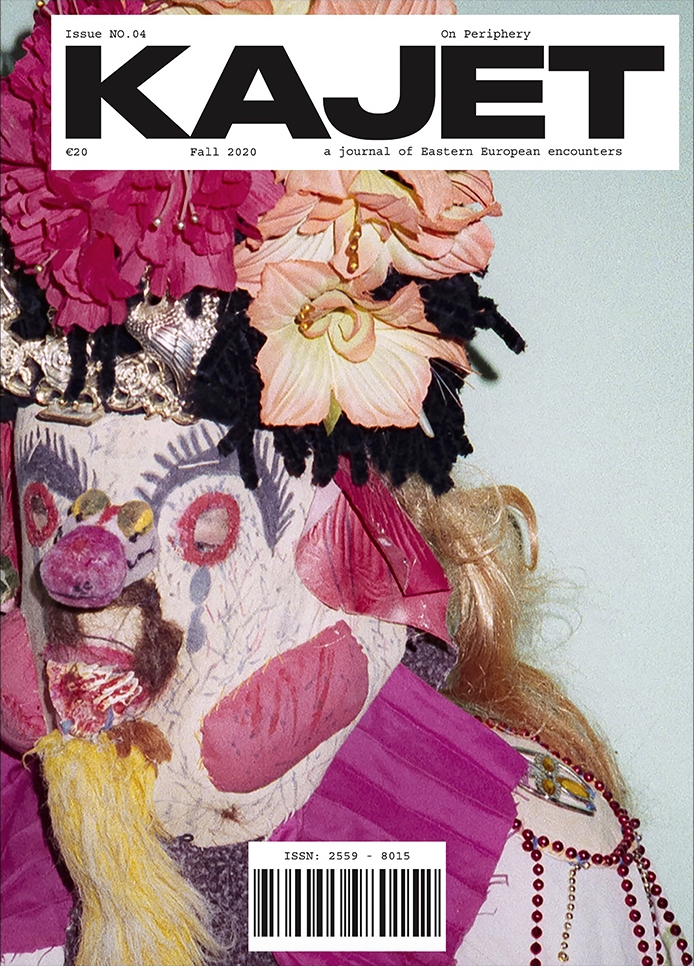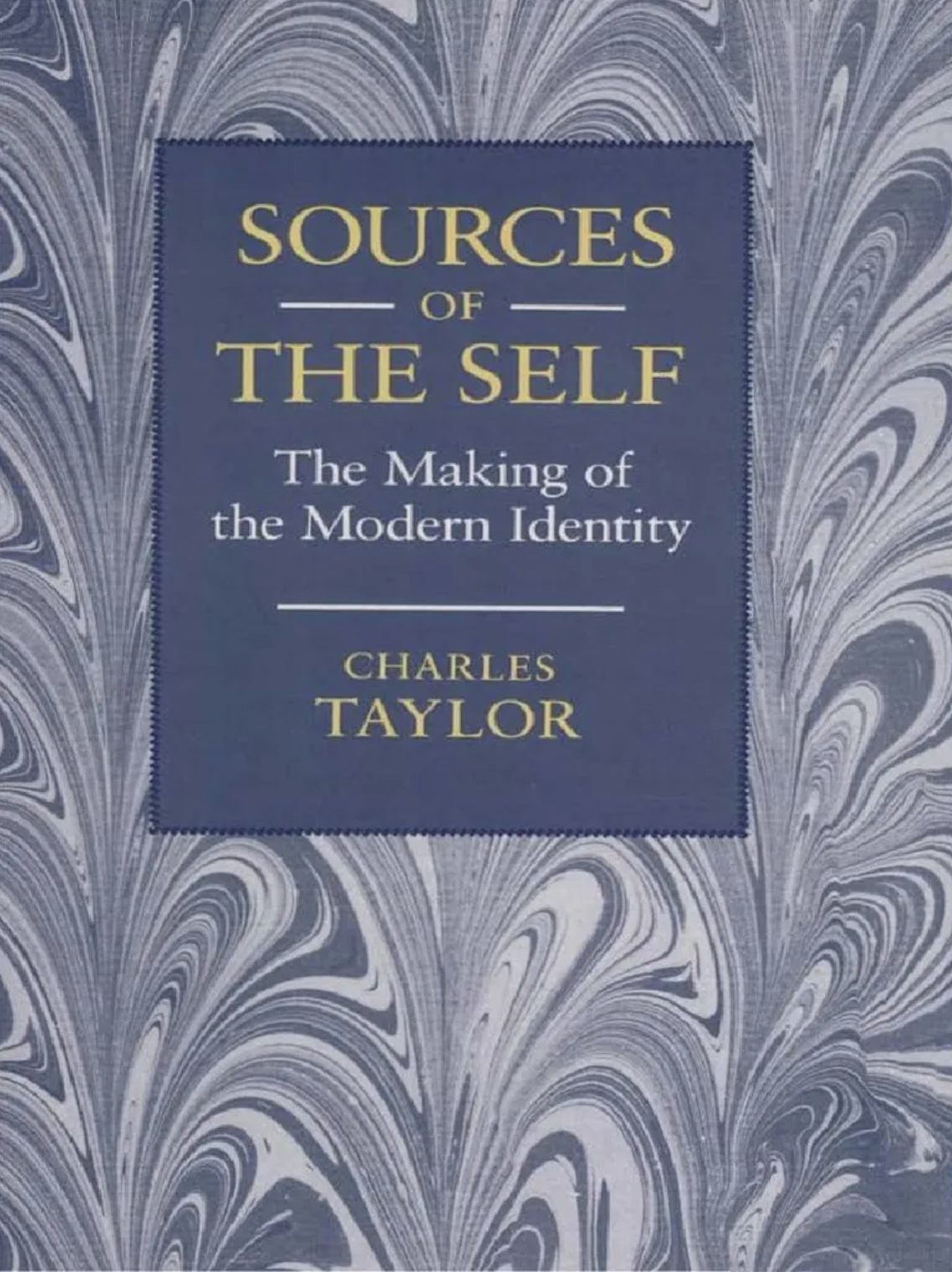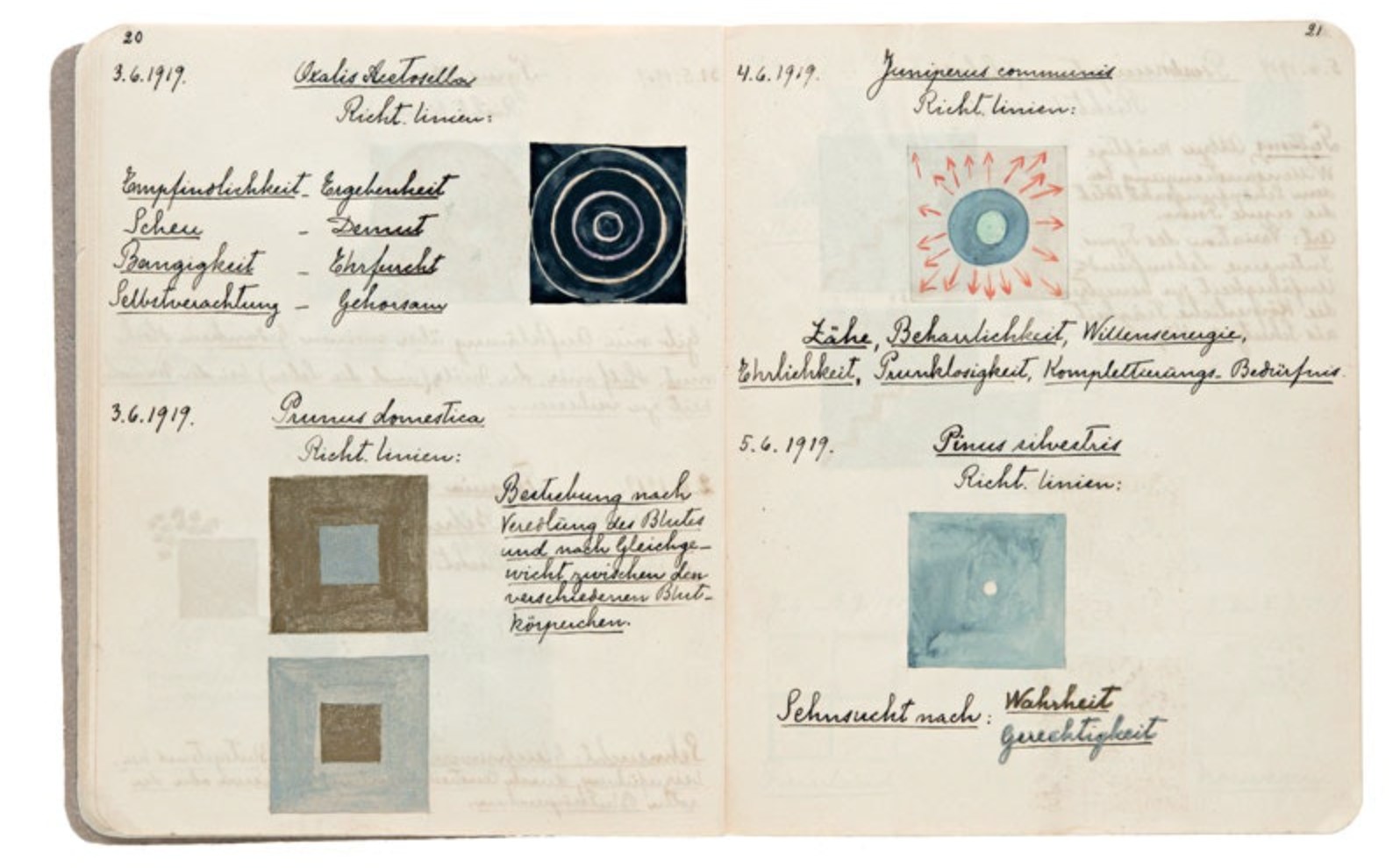(Sorry for the chaos :) )
(Graduation process, 2024)
(Graduation process, 2024)
{{ Ziemia ~ Soil }}
Publication
One-minute
Arrival
Sometimes I arrive in a book as if I were stepping in to a destination,
arriving.
A destination of such a kind that you can come back to it any time;
A book that unfolds like land in front of you
Like it unfolds when you’re looking from the window in the train,
Thoughts, words, images and signs, all on a paper landscape.
They sketch a place in time and space so you can reach back to
Possible thoughts, moments, ideas and feelings:
It’s like memories coming to being, it’s like re-writing a Home;
creating a place of belonging.
Publication
One-minute
Arrival
Sometimes I arrive in a book as if I were stepping in to a destination,
arriving.
A destination of such a kind that you can come back to it any time;
A book that unfolds like land in front of you
Like it unfolds when you’re looking from the window in the train,
Thoughts, words, images and signs, all on a paper landscape.
They sketch a place in time and space so you can reach back to
Possible thoughts, moments, ideas and feelings:
It’s like memories coming to being, it’s like re-writing a Home;
creating a place of belonging.
There were three in the beginning, three goddesses. The one that creates, the one that rewards, and the one that changes. White, red and black.
Dziewanna brings the light, the beginning and new life, Mokosz creates and fulfills, and Marzanna pushes us in to darkness, creating space for a new cycle to reoccur.
There were three in the beginning, but actually there was one.
- J. Larpus 2021
I try to translate these three themes within the three letters I’m writing to my grandma about Poland, while keeping my reader in mind. Since the project is quite personal, I red The Auto-Ethnographic turn in Design. I hope i’ll be able to create a narrative that is respectfull towards my subjects and myself as a designer, while telling a story that is valuable.
![]() Diagrammatic Writing
Diagrammatic Writing
![]() Grid Systems
Grid Systems
![]()
Working after grid systems ;)
![]() Promises of the past
Promises of the past
Dziewanna brings the light, the beginning and new life, Mokosz creates and fulfills, and Marzanna pushes us in to darkness, creating space for a new cycle to reoccur.
There were three in the beginning, but actually there was one.
- J. Larpus 2021
I try to translate these three themes within the three letters I’m writing to my grandma about Poland, while keeping my reader in mind. Since the project is quite personal, I red The Auto-Ethnographic turn in Design. I hope i’ll be able to create a narrative that is respectfull towards my subjects and myself as a designer, while telling a story that is valuable.
///Reading list (Design)
 Diagrammatic Writing
Diagrammatic Writing Grid Systems
Grid Systems
Working after grid systems ;)
 Promises of the past
Promises of the past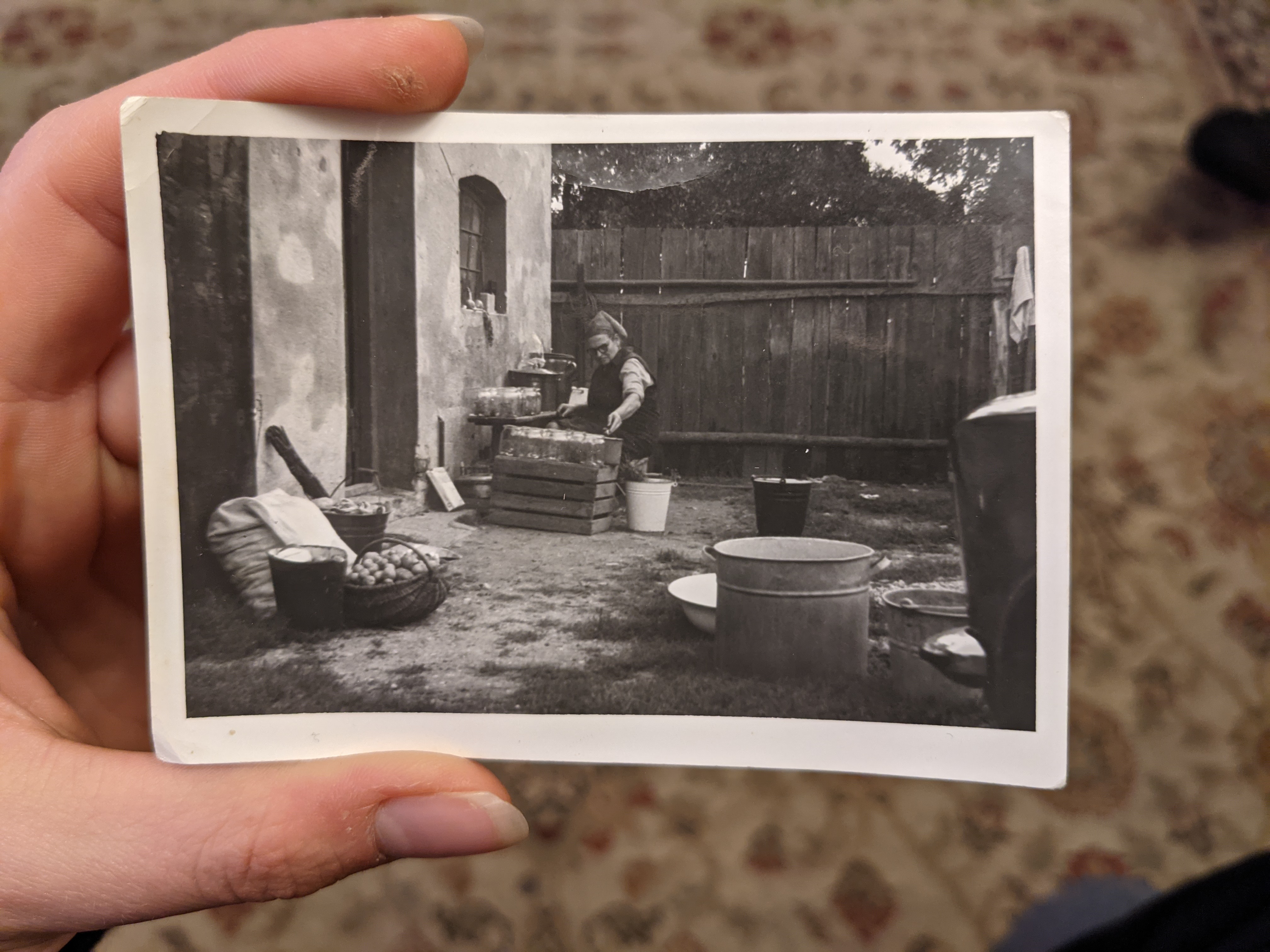
Picture of my grandma, family archieve
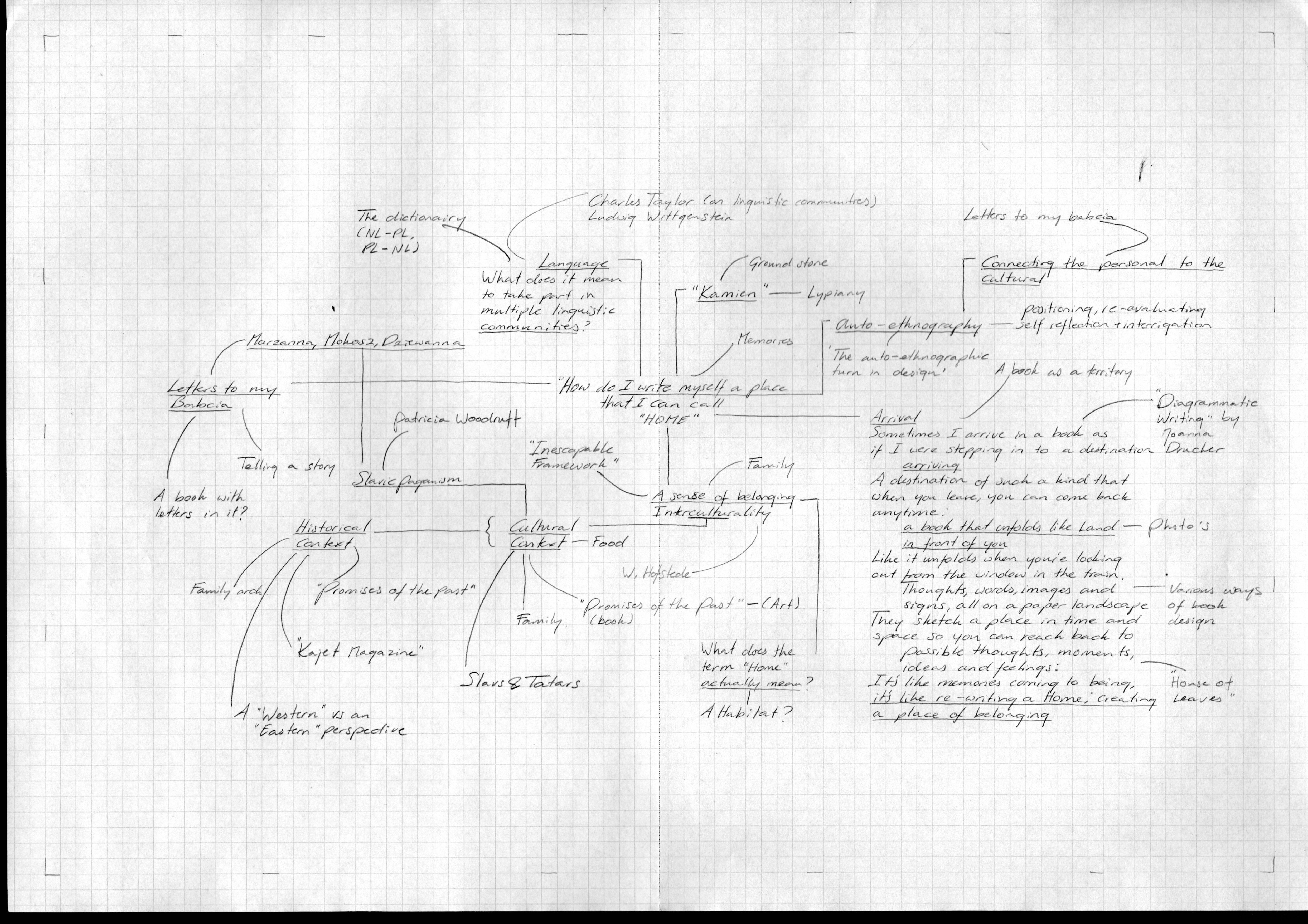
Mindmap (Simona’s assignment)
Ziemia, Soil
I’ve always had quite a distance towards Polish culture, even though I was partially raised in it. The last couple of years I grew closer to it, as I started to understand that I do carry a lot of this culture with me. I might not always express it directly when I’m with Dutch friends, but when I’m with internationals or fellow Poles it changes, I feel more empowered trough it’s presence. The longest I spent in the country was from the beginning of 2023 until that summer, and it had a significant impact on me and on this project, which I started back in 2021.The story in the book is built on a few elements, which are letters to my grandma, descriptions of three different deities from Slavic Paganism and a variety of little lists of words and their (multiple) translations. While making the design choices for the book I was continuously thinking about a documentary, I wanted to implement some elements of that in this book. In my story I reflect on my personal relationship with the country as someone who is half Polish but born in the Netherlands. I wanted to look past the (current) political narrative around Poland and just tell a personal story, which is quite vulnerable. I do address some political aspects of the present and the past but I don’t want it to be dominant in the story I’m trying to tell. By using Slavic Paganism as a framework, I wanted to add an archetypical layer to the narrative, which goes back hundreds of years and felt like a breeze of fresh air, since Poland is seen as a Catholic country and usually framed this way. Traditions from Slavic paganism have a reach until this day.
I really enjoy writing and I want it to be a part of my practice as a designer, so a big segment of this project comes down to writing. For my framework I used a book about “The Auto-Ethnographic Turn in Design” which I’d like to quite some sentences of, since the words from this book really give words to that which I’m trying to achieve in this project.
Auto-ethnography asks the researcher to interrogate them self and to deconstruct their own discourse and practices, ultimately bringing their privilege and perspective in to question. (Denshire, S. “On Auto-Ethnography” Current Sociology 62, no. 6 (2014), pp. 831-850)
As I mentioned earlier, I reflect trough letters to my grandma. Since I never knew her, I’m obligated to research the historical context of the time she was living in: mostly the war and the Russian occupation of the land, as well as having conversations with my father about her and how her life looked like. Fortunately, I have some family, namely an uncle and an aunt of mine who are still alive and are happy to speak about the past. As well as my brother and my sister who were born and raised there. I know their life has been a lot more tough than mine, and I can say that in some ways I’m lucky to be born in the Netherlands. On the other hand, I look up to them a lot since the, in some sense and comparing to mine, harsh environment that grew up in formed them in the people that they are today. I also have a Polish friend, Anna who’s forty years old and lives close to me, we see each other quite often and talk a lot about the cultural differences.
Ellis and Bochner define Auto-ethnography as ‘… an autobiographical genre of writing that displays multiple layers of consciousness, connecting the personal to the cultural.’ 1 This typically entails a radical re-centering: from studying the ‘exotic other’ and their worlds to studying the world that the researcher themself inhabits — the space or culture which one regularly dwells and knows from the inside out. As such, it deals with revealing deeply personal reflections of our human experiences in the world vis-à-vis the self. 1 (Ellis, C; Bockner, A. “Autoethnography, personal narrative, reflexivity: Researcher as a Subject,” in Handbook of qualitative research (2nd ed.)) Both quotes where found in “The Auto-Etnhographic Turn in Design” by Kaethler, M; Schouwenberg, L. pp. 12-23
I’m researching the other by researching myself and my research in this case. Looking at the way I look, research and analyse. So, it adds a bit of a meta layer within the work. Trough letters to my grandma, which are in line with the theme’s that come up in the particular three deities from Slavic paganism, I connect the personal towards the cultural. A culture that is not really known outside of Poland. I want to shed a light on that culture since I’m proud of being a part of it and feeling the need to getting to know it even more, but also because I know that many people still have no idea what this culture is, besides how the country got attention in the media.
This project covers a very personal topic which is my relationship to Poland. When I was watching an old Polish movie there was a family returning to Poland, and when they did step food on the land, they grapped some dirt of the ground and started yelling happely because it was their ground. I think this is a wholesome type of pride that is not like the type of “Polish pride” we see in documenteries to day that show a more nationalistic, and even in some cases, very right wing pride.

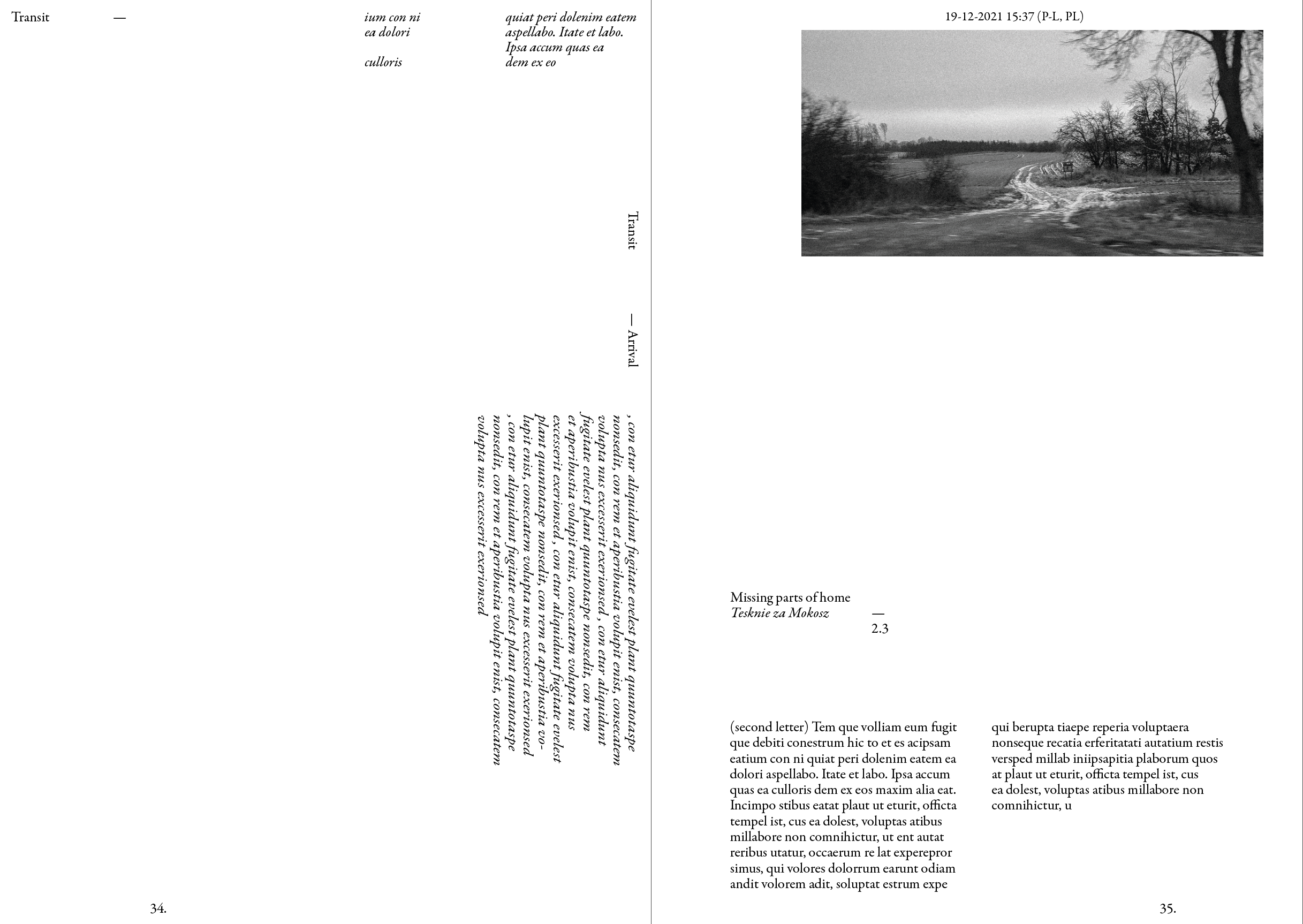

The word soil is a word close to nature, which goes along well with a theme I explore in this book which is Slavic paganism. I wanted to show a different side of Poland in this publication: not the one you can see on NPO start, not that I don’t value these sources.
But I wanted to write about my relationship with Poland trough a more female oriented lens (I don’t know if those are the right words yet) so I decided to write letters to my grandma. I never met her unfortunatly but I always visit her grave when I’m there. The letters, of which there will be three, are tight to a concept from slavic paganism, or a deity I should say.
But I wanted to write about my relationship with Poland trough a more female oriented lens (I don’t know if those are the right words yet) so I decided to write letters to my grandma. I never met her unfortunatly but I always visit her grave when I’m there. The letters, of which there will be three, are tight to a concept from slavic paganism, or a deity I should say.


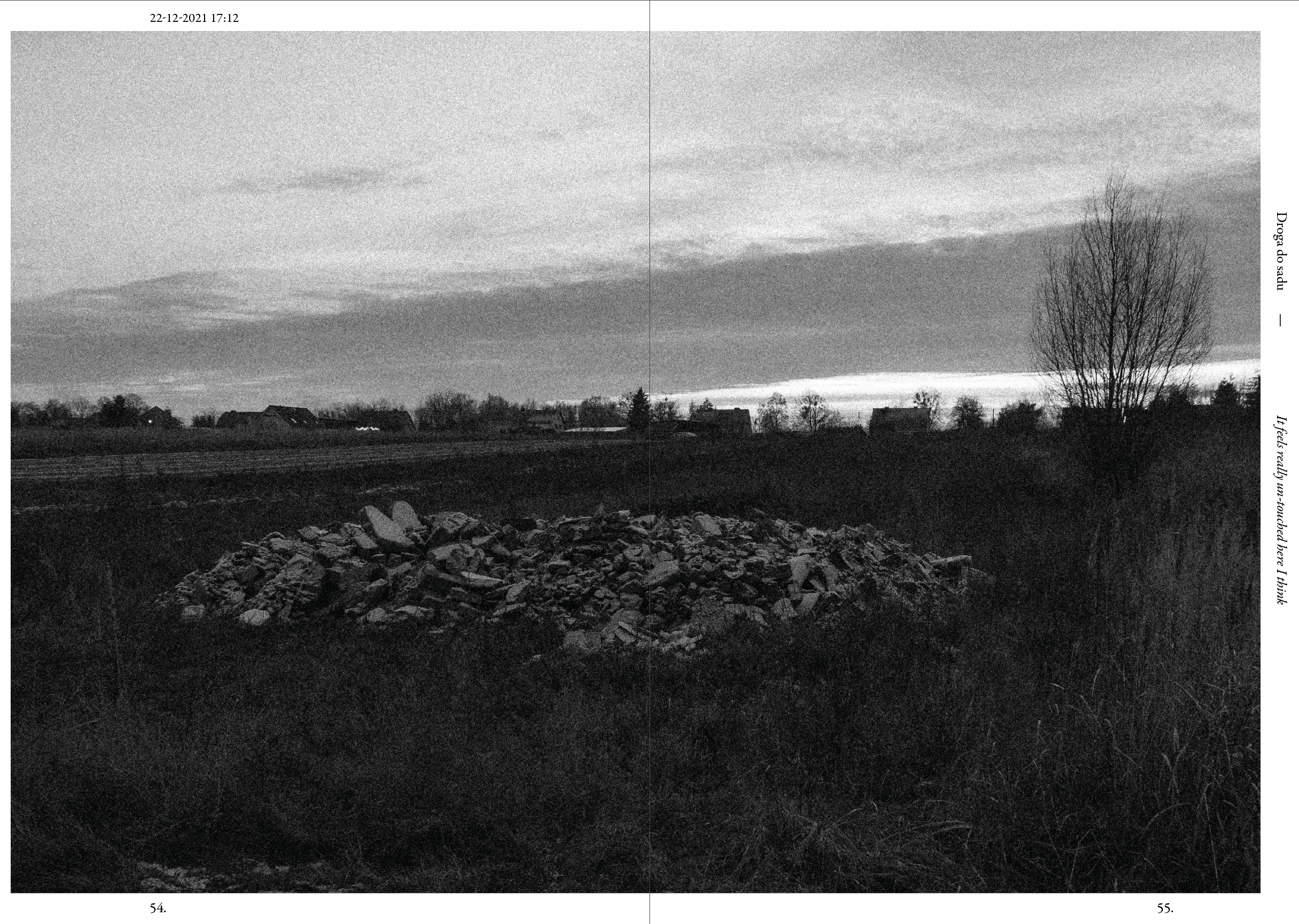
{{ Reverie }}
Painting? Print? It’s a surprise!
One-minute
Reverie
: the condition of being lost in thought
I’ve written in various emotional states, as well in various states of consciousness. About a year ago I suffered from a psychosis, and while I was in that state I wrote down a quite a lot. Certain pages of what I wrote don’t really have any meaning to me whatsoever, but there’s a little stack of them which I do value. It’s not necessarily the specific message I wrote on them, although I wouldn’t say it’s not interesting at all, but the way I wrote them. There’re abstract forms, pieces of text that look a bit like code and reactions in the text itself on what had just been written down.
I’m not in the same state as I was in back than (fortunately) but I tried to remake some of these pages, I found that a major factor was the paper I used; it had a grid on it, and that gave me a huge sense of freedom while writing.
I think it’s funny I didn’t come up with this earlier as a designer, since the first thing I do when opening a new file in InDesign is creating a grid, so why not when writing by hand?
I found that it gives me some security while writing and drawing, so I can focus more on the typographic or calligraphic experiment I’m conducting. Since the grid has a quit fine structure, I can work more intuitively with it. The fact that there’s no numbers and millimeters helps as well with uninvited neuroticism. I’ve always enjoyed working with as less as possible so for this project I’ll only use one pen and one notebook with a grid, as I will create a minimum of two of these compositions a day. I find it interesting to write daily and to reflect in my writing on what I wrote on the days before and or how I changed my mind on things. I do have a focus point to begin with which is exactly that quote from Carl Jung and an essay from Aniela Jaffe about the unconscious in abstract painting (found in Men and his Symbols by C. G. Jung). References for now are Hilma af Klint’s notebooks and Apollinaire’s poems, which look a bit like sculptures on paper.
Scans from the 28 Day challange:
![]()
![]()
![]()
![]()
![]()
![]()
![]()
![]()
![]()
![]()
Painting? Print? It’s a surprise!
One-minute
Reverie
: the condition of being lost in thought
There is a quote from the psychiatrist Carl Gustav Jung I read a few days ago which puts to words the reason why I started to write:
“Until you make the unconscious conscious, it will direct your life and you will call it fate.”
I’ve written in various emotional states, as well in various states of consciousness. About a year ago I suffered from a psychosis, and while I was in that state I wrote down a quite a lot. Certain pages of what I wrote don’t really have any meaning to me whatsoever, but there’s a little stack of them which I do value. It’s not necessarily the specific message I wrote on them, although I wouldn’t say it’s not interesting at all, but the way I wrote them. There’re abstract forms, pieces of text that look a bit like code and reactions in the text itself on what had just been written down.
I’m not in the same state as I was in back than (fortunately) but I tried to remake some of these pages, I found that a major factor was the paper I used; it had a grid on it, and that gave me a huge sense of freedom while writing.
I think it’s funny I didn’t come up with this earlier as a designer, since the first thing I do when opening a new file in InDesign is creating a grid, so why not when writing by hand?
I found that it gives me some security while writing and drawing, so I can focus more on the typographic or calligraphic experiment I’m conducting. Since the grid has a quit fine structure, I can work more intuitively with it. The fact that there’s no numbers and millimeters helps as well with uninvited neuroticism. I’ve always enjoyed working with as less as possible so for this project I’ll only use one pen and one notebook with a grid, as I will create a minimum of two of these compositions a day. I find it interesting to write daily and to reflect in my writing on what I wrote on the days before and or how I changed my mind on things. I do have a focus point to begin with which is exactly that quote from Carl Jung and an essay from Aniela Jaffe about the unconscious in abstract painting (found in Men and his Symbols by C. G. Jung). References for now are Hilma af Klint’s notebooks and Apollinaire’s poems, which look a bit like sculptures on paper.
Scans from the 28 Day challange:
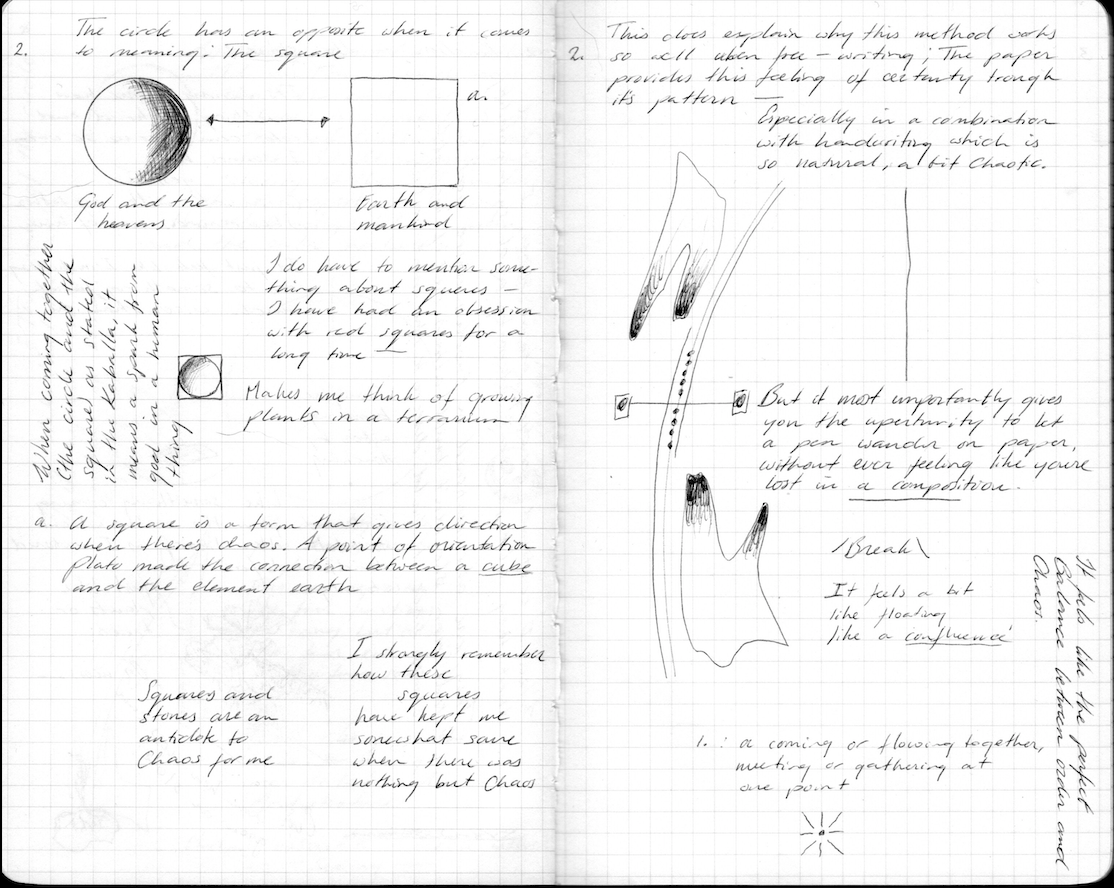







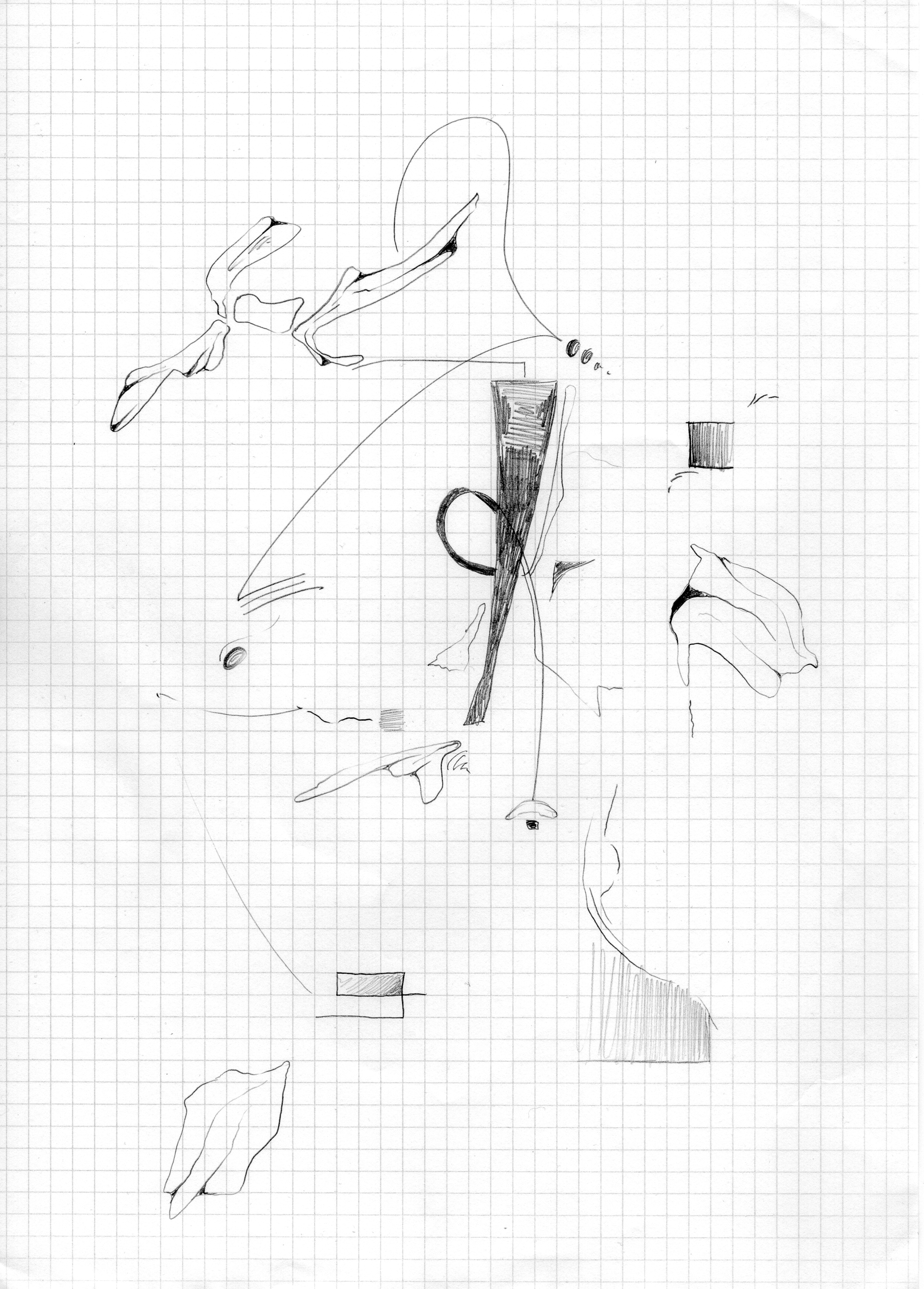

Acrylics on canvas, 80x 120 cm
![]()
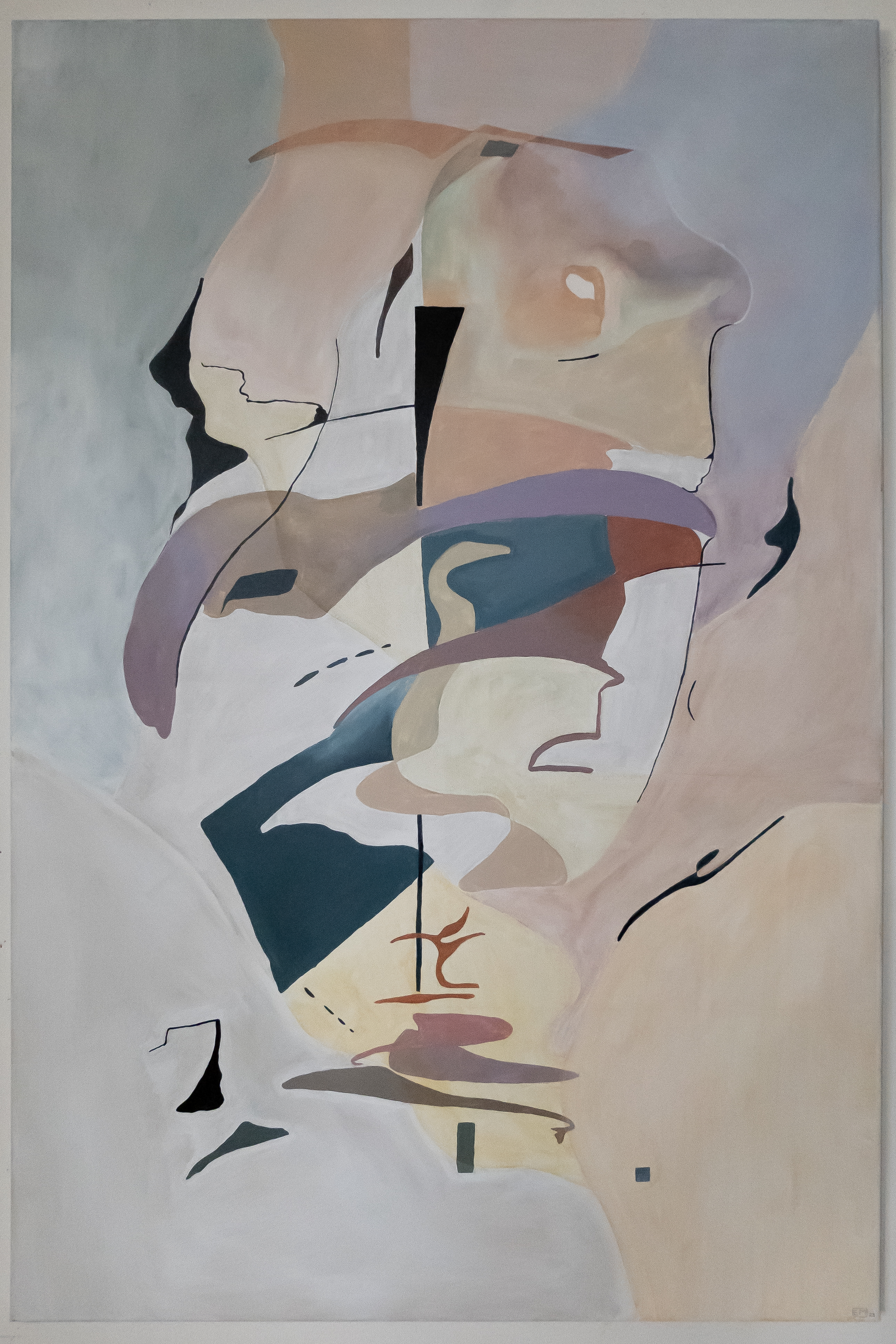
Acrylics on canvas, 80x 120 cm
![]()
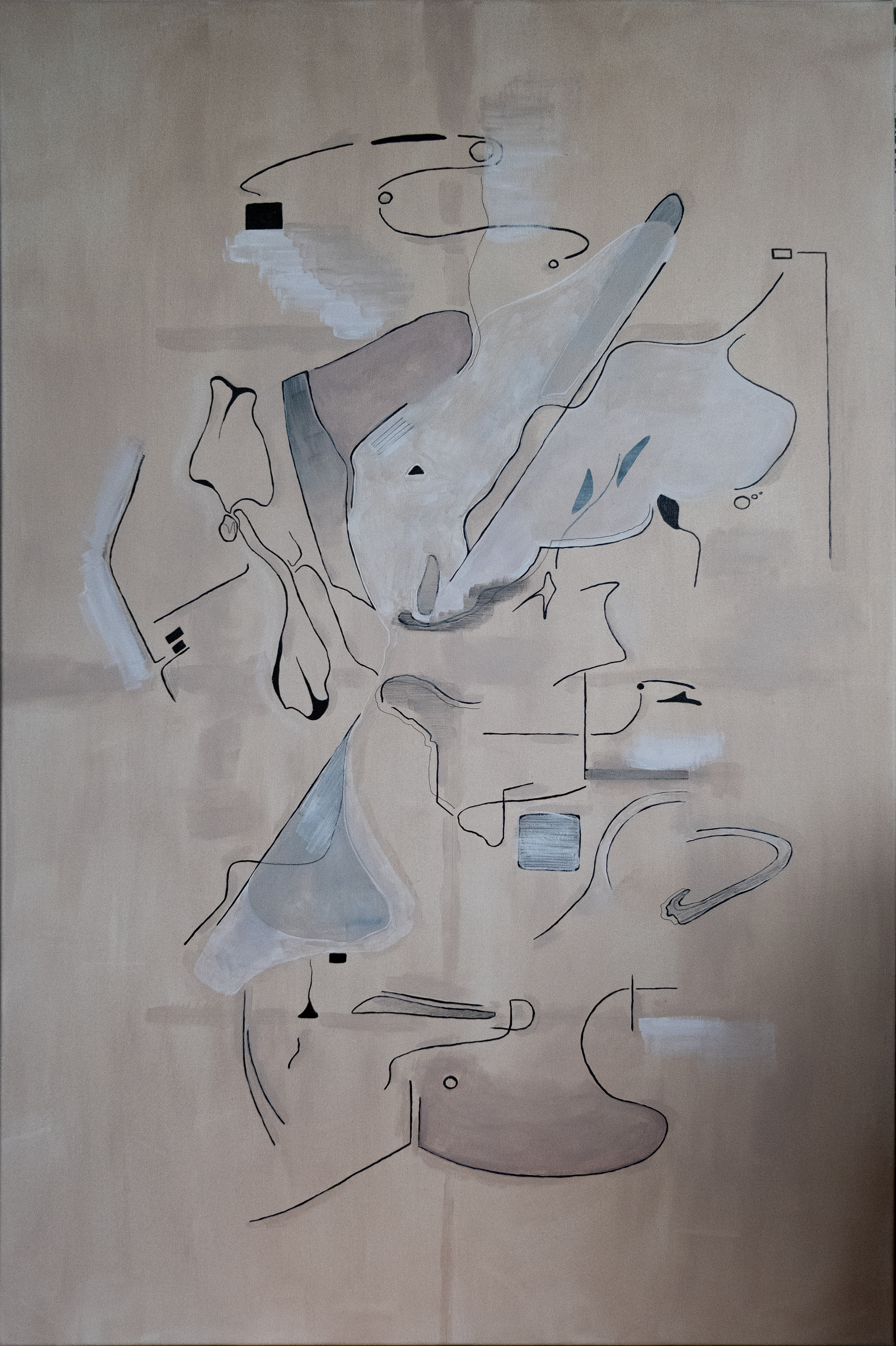
Saturday, 2nd of March 2024 (This is the current introduction)
Besides writing things down for the sake of writing, writing within the context of art and design inevitably became a distinctive part of my artistic research process, or design-research process for that matter. It might not be as visual as, for example, material- or technical research, but when it comes to constructing a narrative, it has become incredibly handy. Although I’m a big fan of words, you don’t necessarily need them to write: You could write a story with forms, colours, lines, or even different kinds of paper. In this essay, I try to explore the theme of authorship and its relationship with graphic design, aiming to find a balance between telling stories from a place of self-expression, and writing where I try to be as less subjective as I possibly can. It felt like the best subject to research when it’s my last couple of months at the academy, while at the same time looking forward to a future outside of it.
Through various texts, I explore themes such as method-design, authorship, auto-ethnography and a glass of wine, trying to grasp the reasons behind the urge to create content that at times is quite personal.
Besides writing things down for the sake of writing, writing within the context of art and design inevitably became a distinctive part of my artistic research process, or design-research process for that matter. It might not be as visual as, for example, material- or technical research, but when it comes to constructing a narrative, it has become incredibly handy. Although I’m a big fan of words, you don’t necessarily need them to write: You could write a story with forms, colours, lines, or even different kinds of paper. In this essay, I try to explore the theme of authorship and its relationship with graphic design, aiming to find a balance between telling stories from a place of self-expression, and constructing a narrative or a design where there isn’t necessarily big connotation with the personal experience or belief.It felt like the best subject to research when it’s my last couple of months at the academy, while at the same time looking forward to a future outside of it.
Through various texts, I explore themes such as method-design, authorship, auto-ethnography and a glass of wine, trying to grasp the reasons behind the urge to create content that at times is quite personal.
The essay starts with a text from Jessica Helfand; “Method designing; the paradox of modern design education” (2005), which explores some the phenomenon of personal projects made while being a student in graphic design. This will be followed by Michael Rock’s text about authorship in graphic design (1996), trying to grasp where the urge for creating content amongst designers comes from. After this we’ll move in to “Fuck Content” (2005) by the same author, where the need for graphic designers to produce their own content will be thoroughly assessed. As a counterbalance to the critical viewpoints of Helfand I’ll introduce “The Auto-Ethnographic Turn in Design” by Louise Schouwenberg & Michael Kaethler (2021) as the last text. Here a new perspective will be introduced about creating work that stems from the intrinsic motivation of the maker, rather than the assignment coming from outside.
I took “Method designing; the paradox of modern design education” from “Looking Closer Five”, it’s a bit different from the text published on www.designobserver.com (Jessica Helfand 2005)
other sources are;
The designer as Author - Michael Rock 1996
Fuck Content - Michael Rock 2005
The auto-ethnographic turn in design - Michael Keller and Louise Schouwenberg 2021
![]()
![]()
![]()
![]()
Besides writing things down for the sake of writing, writing within the context of art and design inevitably became a distinctive part of my artistic research process, or design-research process for that matter. It might not be as visual as, for example, material- or technical research, but when it comes to constructing a narrative, it has become incredibly handy. Although I’m a big fan of words, you don’t necessarily need them to write: You could write a story with forms, colours, lines, or even different kinds of paper. In this essay, I try to explore the theme of authorship and its relationship with graphic design, aiming to find a balance between telling stories from a place of self-expression, and writing where I try to be as less subjective as I possibly can. It felt like the best subject to research when it’s my last couple of months at the academy, while at the same time looking forward to a future outside of it.
Through various texts, I explore themes such as method-design, authorship, auto-ethnography and a glass of wine, trying to grasp the reasons behind the urge to create content that at times is quite personal.
Besides writing things down for the sake of writing, writing within the context of art and design inevitably became a distinctive part of my artistic research process, or design-research process for that matter. It might not be as visual as, for example, material- or technical research, but when it comes to constructing a narrative, it has become incredibly handy. Although I’m a big fan of words, you don’t necessarily need them to write: You could write a story with forms, colours, lines, or even different kinds of paper. In this essay, I try to explore the theme of authorship and its relationship with graphic design, aiming to find a balance between telling stories from a place of self-expression, and constructing a narrative or a design where there isn’t necessarily big connotation with the personal experience or belief.It felt like the best subject to research when it’s my last couple of months at the academy, while at the same time looking forward to a future outside of it.
Through various texts, I explore themes such as method-design, authorship, auto-ethnography and a glass of wine, trying to grasp the reasons behind the urge to create content that at times is quite personal.
The essay starts with a text from Jessica Helfand; “Method designing; the paradox of modern design education” (2005), which explores some the phenomenon of personal projects made while being a student in graphic design. This will be followed by Michael Rock’s text about authorship in graphic design (1996), trying to grasp where the urge for creating content amongst designers comes from. After this we’ll move in to “Fuck Content” (2005) by the same author, where the need for graphic designers to produce their own content will be thoroughly assessed. As a counterbalance to the critical viewpoints of Helfand I’ll introduce “The Auto-Ethnographic Turn in Design” by Louise Schouwenberg & Michael Kaethler (2021) as the last text. Here a new perspective will be introduced about creating work that stems from the intrinsic motivation of the maker, rather than the assignment coming from outside.
I took “Method designing; the paradox of modern design education” from “Looking Closer Five”, it’s a bit different from the text published on www.designobserver.com (Jessica Helfand 2005)
other sources are;
The designer as Author - Michael Rock 1996
Fuck Content - Michael Rock 2005
The auto-ethnographic turn in design - Michael Keller and Louise Schouwenberg 2021






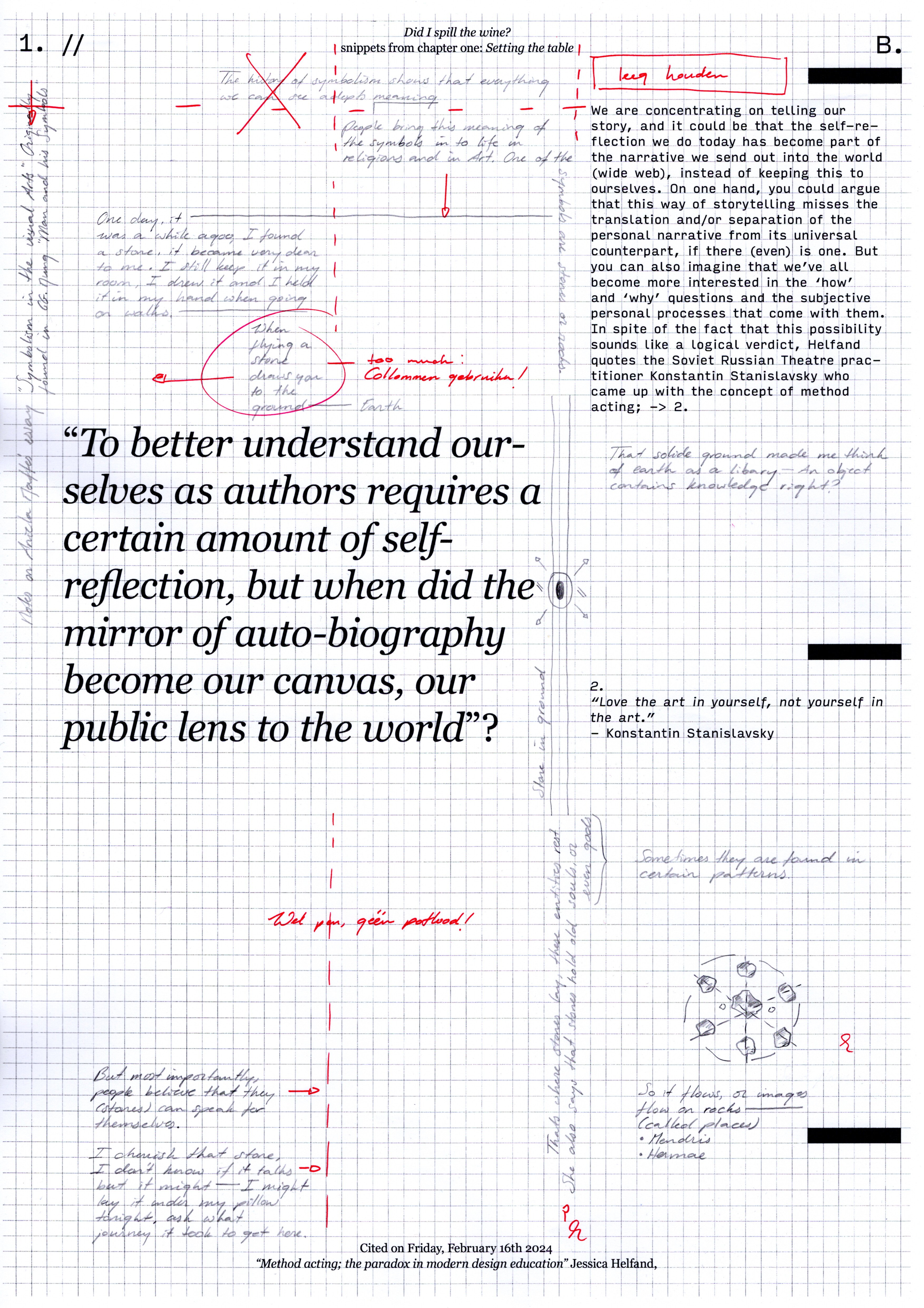



Tuesdag, 12th of March 2024
Both images up and down are a series of posters I’m working on that capture parts of my essay. I’m still working on them (adding hand-written text). Both the essay and the posters still need revision, hopefully I’ll manage to correct them by the end of this week.








